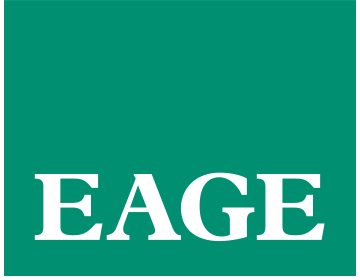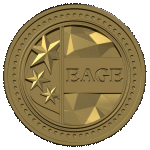Welcome to a new newsletter prepared by the EAGE A.I. Committee. As a group of EAGE members and volunteers they help you navigate the digital world and find the bits that are most relevant to geoscientists.
Interested in learning more about this community? With the EAGE Annual round the corner, here are some opportunities to catch up with them:
- Hackathon “Explainable A.I.”, 5-6 June 2022
- Dedicated Session “A.I. in Geoscience and Geophysics: Current Trends and Future Prospects”, 7 June 2022
You are welcome to join EAGE or renew your membership to support the work of the EAGE A.I. Community and access all the benefits offered by the Association.
EAGE Membership Benefits: Join or Renew
Curious to know all EAGE is doing for the digital transformation?
Visit the EAGE Digitalization Hub
![]()
![]() What: Recent development on the world stage:
What: Recent development on the world stage:
PaLM by Google
Google just released a new large network system named PaLM (Pathways Language Model) that is essentially a large Transformer (*) type neural network model with 540 billion parameters trained using a new approach called ‘Pathways’. The improvements in natural language processing/modeling have been nothing short of astonishing.
![]() Why this is useful: The fundamental thought behind the Pathways approach is to step away from having separate ML models for each specific task to one model for more tasks, each using only a (sometimes mutually partly overlapping) part of the network to train and predict from. The benefits include faster learning (only a fraction of the parameters used), cross-domain (task), and even resolving entirely new problems with it. The respective tasks are done on any input data type (text, images, etc.). This as the logic/system behind resolving one type of problem can in part also apply to another task.
Why this is useful: The fundamental thought behind the Pathways approach is to step away from having separate ML models for each specific task to one model for more tasks, each using only a (sometimes mutually partly overlapping) part of the network to train and predict from. The benefits include faster learning (only a fraction of the parameters used), cross-domain (task), and even resolving entirely new problems with it. The respective tasks are done on any input data type (text, images, etc.). This as the logic/system behind resolving one type of problem can in part also apply to another task.
A much better explanation and more detail on the consequences are given in the below two links:
- Introduction Pathways: A next-generation AI architecture
- Google AI sparks a revolution in Machine Learning
(*) See paper review ‘Deep Hyperspectral Unmixing using Transformer Network’ below for another example; note Transformers will be covered more as a theme in future newsletters (J vd Mortel)
![]()
![]() What: GemPy; geomodelling toolkit
What: GemPy; geomodelling toolkit
A fully open-source 3D structural geomodelling toolkit originated at the RWTH Aachen University. The technical approach is based on potential field interpolation; a universal cokriging method. The stochastic approach is integral, enabling the handling and analyzing uncertainties.
![]() Why this is useful: For more detail on the theory behind the modeling approach.
Why this is useful: For more detail on the theory behind the modeling approach.
The developers aim not to compete with the well-known commercial packages (i.e. Petrel, GeoModeler, etc.) but to work together in a community to further develop new approaches to geomodelling.
The code (Python, Theano) is freely available as Jupyter Notebooks.
For getting started, this video by Ruslan Miftakhov will help.
![]()
![]() What: Book recommendations
What: Book recommendations
Machine Learning in the Oil and Gas Industry: Including Geosciences, Reservoir Engineering, and Production Engineering with Python
Mostly focused on the practical and implementation aspects, keeping the theory part limited to what is necessary for basic understanding of the main concepts of supervised and unsupervised Machine Learning. Several real industry application examples are included, plus an overview of the Python language syntax and functionality that are used in these examples.
The book starts with the identification of problem statements in the Oil & Gas cycle that can be considered good candidates to apply Machine Learning for improving the workflow in accuracy and efficiency, etc.
![]() Hands-on Machine Learning with Scikit-Learn, Keras and TensorFlow
Hands-on Machine Learning with Scikit-Learn, Keras and TensorFlow
This is one of the O’Reilly series, a very comprehensive textbook on practical machine learning, covering the fundamentals, neural networks, deep learning and several advanced topics in comprehensive detail, plus implementation using well-known software libraries.
Basic knowledge of the underlying math (linear algebra, calculus) and some proficiency in Python programming are prerequisites.
This book is well suitable for people already (somewhat) familiar with machine learning, as well as a source of reference/recapitulation material for more advanced users.
![]()
![]()
What: Article reviews and suggestions
Quantum-Enhanced Deep Learning-Based Lithology Interpretation from Well Logs; Naihao Liu et al., 2021
An example of the application of quantum computing (superposition, entanglement) in machine learning, reviewed by Ruslan Miftakhov.
![]() Deep Hyperspectral Unmixing using Transformer Network; Preetam Ghosh et al., IEEE Mar 2022
Deep Hyperspectral Unmixing using Transformer Network; Preetam Ghosh et al., IEEE Mar 2022
Hyperspectral Imaging (HSI) is a remote sensing technology that splits the image (signal) up into many virtually non-overlapping, very narrow EM bandwidths (typically only 10 nm). Such spectrally detailed surface reflectance data can contain a lot of information on the actual materials and elements whose spectra are mixed with each other.
This paper discusses the methodology and results for spectral unmixing using a convolution auto encoder plus transformer network. Transformers are considered to be much better in handling image and sequential data than well established recurrent networks (GRU, LSTM) in terms of context capture, including longer range (distance) feature dependencies and efficiency.
Considerable care and detail are given to describe the method applied and the mathematical foundation (requiring reading at least twice). Same for the experimental datasets and setups. The discussion is detailed with comprehensive reporting on statistics and illustrations, which well underwrite the overall conclusion that the methodology proposed in the paper is a considerable and quantifiable improvement over well established competing approaches.
The relevance of this case for geosciences is twofold: spectral unmixing (or, in general, any unmixing of field datasets) and hyperspectral imaging itself, which can be used for remote sensing of geological outcrops (i.e. hard to reach overland, complement actual in situ field campaigns, etc.).
![]()
Discover EAGE Learning Resources on A.I. and machine learning
Third EAGE Workshop on HPC in Americas
This newsletter is edited by the EAGE A.I. Committee.
| Name | Company / Institution | Country |
|---|---|---|
| Anna Dubovik | WAIW | United Arab Emirates |
| Jan H. van de Mortel | Independent | Netherlands |
| Jing Sun | TU Delft | Netherlands |
| Julio Cárdenas | Géolithe | France |
| George Ghon | Capgemini | Norway |
| Lukas Mosser | Aker BP | Norway |
| Oleg Ovcharenko | NVIDIA | United Arab Emirates |
| Nicole Grobys | DGMK | Germany |
| Roderick Perez | OMV | Austria |
| Surender Manral | Schlumberger | Norway |






